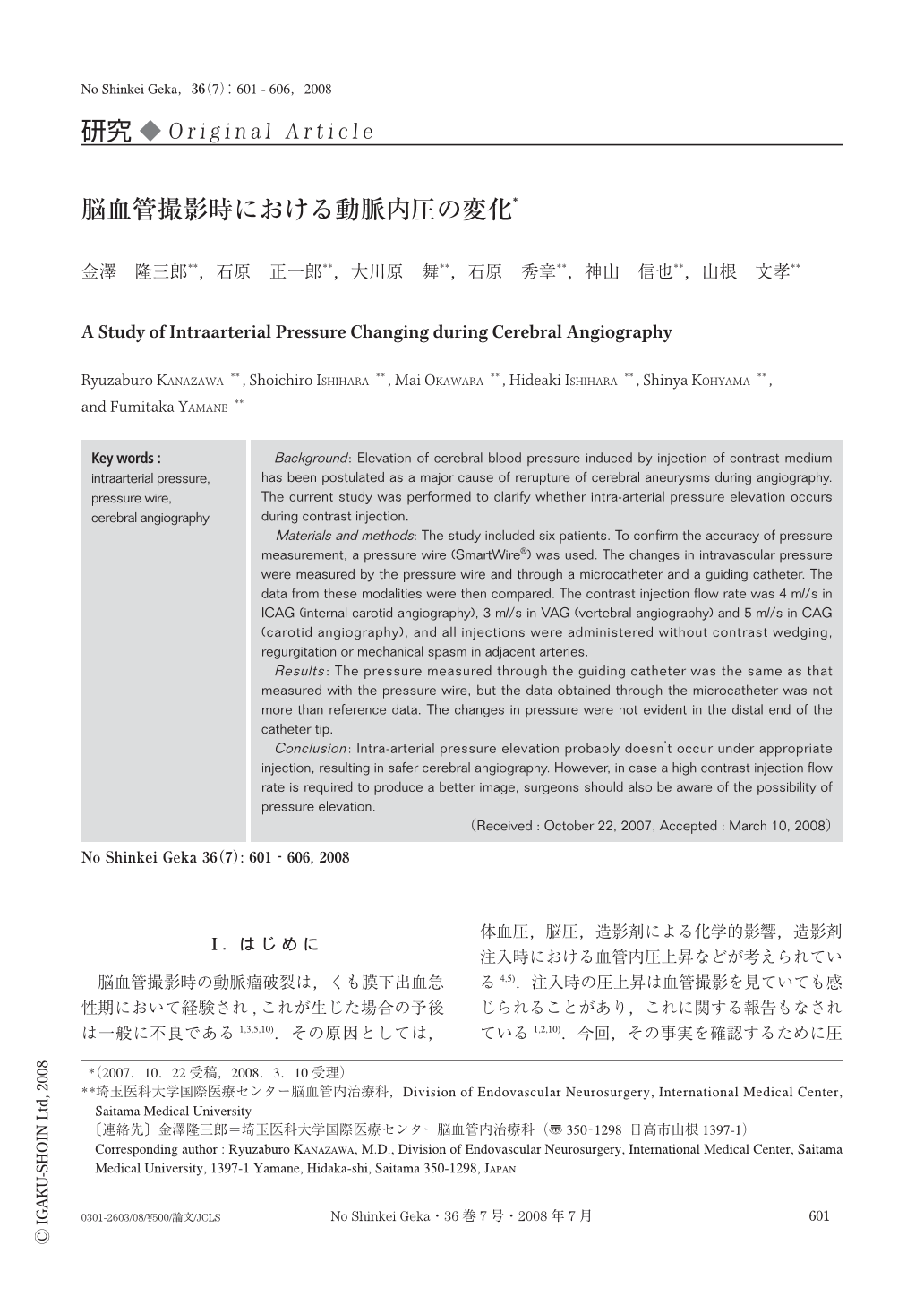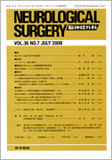Japanese
English
- 有料閲覧
- Abstract 文献概要
- 1ページ目 Look Inside
- 参考文献 Reference
Ⅰ.はじめに
脳血管撮影時の動脈瘤破裂は,くも膜下出血急性期において経験され,これが生じた場合の予後は一般に不良である1,3,5,10).その原因としては,体血圧,脳圧,造影剤による化学的影響,造影剤注入時における血管内圧上昇などが考えられている4,5).注入時の圧上昇は血管撮影を見ていても感じられることがあり,これに関する報告もなされている1,2,10).今回,その事実を確認するために圧測定用のワイヤーを用いて,脳血管造影時に遠位血管に留置し,その変化を測定した研究を行った.
Background: Elevation of cerebral blood pressure induced by injection of contrast medium has been postulated as a major cause of rerupture of cerebral aneurysms during angiography. The current study was performed to clarify whether intra-arterial pressure elevation occurs during contrast injection.
Materials and methods: The study included six patients. To confirm the accuracy of pressure measurement, a pressure wire (SmartWire®) was used. The changes in intravascular pressure were measured by the pressure wire and through a microcatheter and a guiding catheter. The data from these modalities were then compared. The contrast injection flow rate was 4ml/s in ICAG (internal carotid angiography), 3ml/s in VAG (vertebral angiography) and 5ml/s in CAG (carotid angiography), and all injections were administered without contrast wedging, regurgitation or mechanical spasm in adjacent arteries.
Results: The pressure measured through the guiding catheter was the same as that measured with the pressure wire, but the data obtained through the microcatheter was not more than reference data. The changes in pressure were not evident in the distal end of the catheter tip.
Conclusion: Intra-arterial pressure elevation probably doesn’t occur under appropriate injection, resulting in safer cerebral angiography. However, in case a high contrast injection flow rate is required to produce a better image, surgeons should also be aware of the possibility of pressure elevation.

Copyright © 2008, Igaku-Shoin Ltd. All rights reserved.


